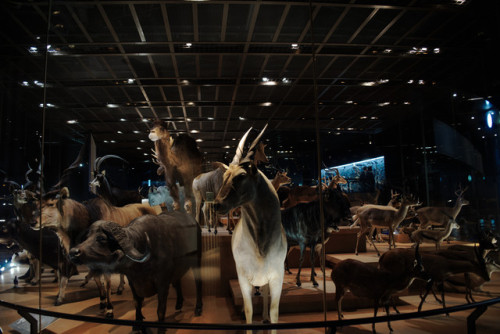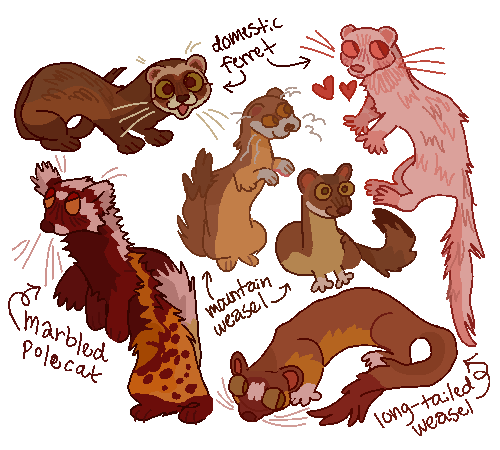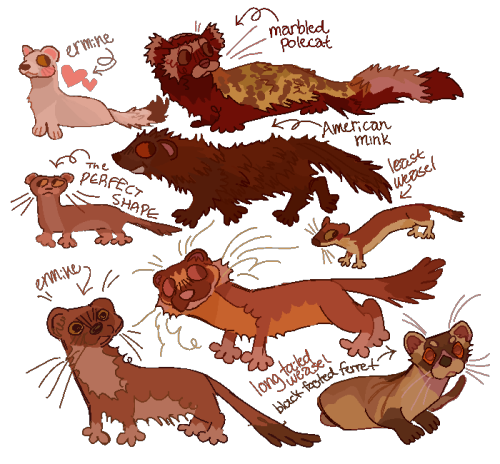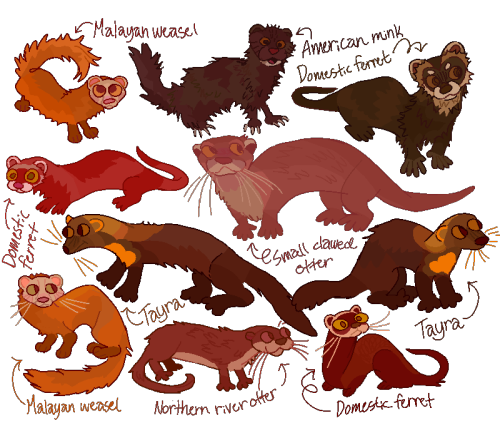Mammals - Tumblr Posts

How did Booba Evolve? The Weird Origin of Milk
Milk is kinda weird if you think about it. Mothers excreting liquid food out of an erogenous zone into their baby’s mouth? Ew!
Why did that evovle?
Because our ancestors had to sweat on their eggs.
Yes, I'm not joking, read more here:

Link to blog
How Cats Evolved to be Pets

View On WordPress
How Dog Cancer Became a New Species (CTVT)
You probably think of cancer as being not infectious, right? One of your cells made a pro gamer move and started dividing uncontrollably, but it’s not like that could become someone else’s problem. I mean, I can’t even get a kidney transplant, gaining superhuman urine production with the power of three kidneys, without needing drugs to stop my body from rejecting it.
But it turns out there actually are some types of cancer that are not only infectious, but become plagues in their own right! Lets talk about that.

View On WordPress
Day 22 of posting cute creatures we found on our field trip:

Ground squirrel (Spermophilus citellus) is an endangered species in the Balkans. That day of the field trip we had the opportunity to work with an expert in their biology. She regularly catches and marks the individuals so that she can monitor their health and behavior. The ground squirrels get regular check ups, which is why she’s holding this one. This little girl had a big tick and she carefully removed it.
Ground squirrels are small, burrowing rodents that feed on seeds, plants and roots. People believe that they cause damage to the crops, but that simply isn’t the truth. These animals hate and I mean hate tall vegetation. Our crops are simply too tall for them. They live only in places where grass is growing shorter than they are when they stand up and that’s like 10-15cm.
Nevertheless, people still kill these rodents, so we put strict protection of them. Any place they inhabit is immediately labeled as “of high importance for protection”. And for a good reason!
Ground squirrels are the favorite food of many birds of prey. The moment we managed to stabilize their populations birds of prey that were extinct in that region immediately returned. Now people can go birdwatching five different species of raptors all thanks to their cute food source.
And that’s not all! Ground squirrels, just like all the others, hibernate during winter and prepare stocks of seeds for food. And since they feed on short plants they actually can expand pastures and fields. This is not only great for grazing animals, but it also deters rats and mice who hate open spaces from crops. Yes, these babies actually protect crops just by being themselves.
And if you’re wondering how are they caught: there are special traps made only for them. These traps look like cylindrical cage that you put into their burrow’s opening. The burrow can have many openings so you have to have many traps. Once the ground squirrel gets inside the trap the doors close behind it. It remains completely unhurt, but it can freeze quickly, so the researchers have to be on the field constantly to check the traps. Here’s how the girl in the first pic looked inside a trap. She was not happy, but at least, she got a health check and a tick removed:

Oh and, even though they are called “ground squirrels” they completely lack the fluffy tail. So don’t worry, she’s just fine.




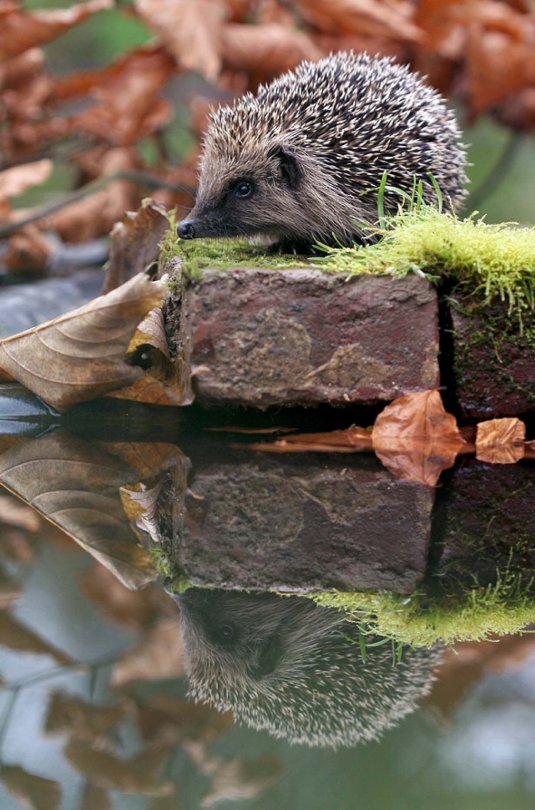













Необычные и интересные факты о ежах:
Ежи появились на Земле раньше, чем люди – около 15 миллионов лет назад. Роднит нас с ежами также то, что у них зубов почти столько же, как у нас – их 36, и эти зубы также выпадают к старости. У ежей не самое лучшее зрение. Правда, считается, что ежи, в отличие от всех остальных животных, у которых "черно-белое" зрение, могут различать цвета. Число игл на теле у этих животных напрямую зависит от их возраста. У молодых особей, их около 3 тысяч, а у более старых – до 5-6 тысяч.
Несмотря на свои небольшие размеры ежи достаточно шустрые животные. Они могут бежать со скоростью до 3 м/с. Для своих коротких лапок ежик очень много ходит. За день он может преодолеть расстояние до 2 км. Территория одного ежа может занимать 20 гектаров. Ежи могут передвигаться даже по болоту и хорошо плавают.
Чтобы пережить зимнюю спячку, еж набирает как минимум 500 граммов веса. За зиму еж теряет до 40 % своего веса. Поэтому, проснувшись, он сразу отправляется на поиски пищи. Ежи чуют добычу на расстоянии нескольких метров. Когда еж впадает в спячку, обменные процессы в его организме замедляются. Температура тела понижается до 0°C, а сердцебиение падает с уровня 170 ударов в минуту до 5.
Ежи имеют иммунитет к яду гадюк. Также на ежей почти не действуют и другие яды, даже самые сильные, такие как сулема, мышьяк, цианистый калий, синильная кислота и другие.
Всего в мире существует 24 вида ежей. Некоторые из них схожи между собой так, что различить их может только опытный зоолог, а другие внешне больше похожи на крыс.
Unusual and interesting facts about hedgehogs:
Hedgehogs appeared on Earth earlier than humans – about 15 million years ago. What we have in common with hedgehogs is that they have almost as many teeth as we do – there are 36 of them, and these teeth also fall out in old age. Hedgehogs don't have the best eyesight. However, it is believed that hedgehogs, unlike all other animals that have "black and white" vision, can distinguish colors. The number of needles on the body of these animals directly depends on their age. In young individuals, there are about 3 thousand, and in older ones – up to 5-6 thousand.
Despite their small size, hedgehogs are quite nimble animals. They can run at speeds of up to 3 m/s. For his short legs, the hedgehog walks a lot. He can cover a distance of up to 2 km in a day. The territory of one hedgehog can occupy 20 hectares. Hedgehogs can move even in a swamp and swim well.
To survive hibernation, a hedgehog gains at least 500 grams of weight. During the winter, the hedgehog loses up to 40% of its weight. Therefore, when he wakes up, he immediately goes in search of food. Hedgehogs sense prey at a distance of several meters. When a hedgehog hibernates, the metabolic processes in its body slow down. The body temperature drops to 0°C, and the heartbeat drops from 170 beats per minute to 5.
Hedgehogs are immune to viper venom. Also, other poisons, even the strongest ones, such as sulema, arsenic, potassium cyanide, prussic acid and others, have almost no effect on hedgehogs.
There are 24 species of hedgehogs in the world. Some of them are similar to each other so that only an experienced zoologist can distinguish them, while others look more like rats.
Источник: //t.me/+fxNu20lM26MwYzhi, //kartin.papik.pro /osen 36405-kartinki-ezhik-osennij-68-foto.html,//zooclub.ru/ wallpaper / 17598, //rtraveler.ru/photo/1316250/,https://priroda.club/les-i-derevja /749-ezhik-v-lesu-87-foto.html,vk.com/@radio_c-ezhu-ponyatno, //mixnews.lv/samoe-interesnoe/2022/12/29/30-interesnyh-faktov-o-ezhah-vy-tochno-etogo-ne-znali/,//ecokem.ru/2021/02/05/den-ezha/#:~:text=Ежи%20появились%20на%20Земле%20раньше,6%2C5%20миллиона%20лет%20назад.
QUICK PALEO FACT


Xenosmilus hodsonae (an early pleistocene sabrecat from Florida) has an absoloutely NASTY set of incisors. Its incisors were not only huge, but serrated. It also, apparently, has serrated carnassials.
(Illustrations by Massimo Molinero and Ville Sinkkonen respectively)


This is beautiful.
I would also love to know what you associate with great blue herons if you ever have time to add to this!
A Weirdling Bestiary: Part 1- Beasts of City and Suburbia
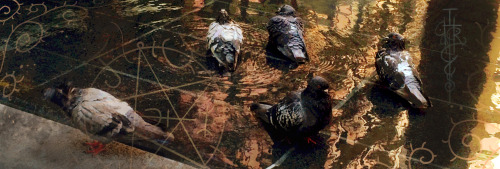
Some notes to start off with-
This is all a part of my personal UPG and world-view, which is a culmination of my individual experiences, upbringing, influences, and research. Although much of this personal mythology is based off of the biology and behaviors of the creatures in question, you may have different associations and feelings about these animals, and that’s totally ok.
There are some animals commonly found in cities and suburban areas which have been left out of this section (like foxes, bats, deer, rabbits, snakes, toads, and all insects) because I’ll be covering them later in other chapters.
~~~~~~~~~~~~~~~~
~Birds~
Blue Jay- Blue jays are fierce, clever and have complex social lives. They have deep ties with oak trees, which are regarded in several cultures as the Tree of Life, the king of trees, and sacred to many gods of thunder, lightning, and sky. They are excellent communicators, both vocally and physically, and can imitate the calls of other birds. Even though they’re quite common, much of their habits remain a mystery to those who study them. The beautiful blue color for which they are known is not a true pigment, but in fact an optical effect of light scattering within the cell structure of their feathers. They are birds of magic, illusion, mystery, and complex familial ties, and are emblematic of the element air and the realm of the sky. a well as bright, lively daytime energy. For offerings, give them acorns.
Canada Goose- Geese are the mortal enemies of business people and all Suits. They travel in formation and are loyal to their mates and comrades. As such, they are good animal guides for anyone who identifies strongly as part of a group or community and those who function as a team. Goose magic is great for sticking it to The Man. As they migrate in spring and fall, they also represent transitions and cycles. Admire them from afar and stay the fuck away from their babies if you don’t want to die a very painful death.
Crow- If you are outside, it is unlikely you are out of site of a crow. Fittingly, insight and observation are among their primary associations. Crows are smart, mischievous, and extremely common. Because they’re ubiquitous pretty much everywhere, they’re a reminder of the constant presence of magic in the world.
Although each crow is very much an individual, they live in family groups and cooperate with and look out for those within their groups. At the same time, they regularly engage in bitter rivalries and battles with crows from other families. In spite of that, multiple families will come together and roost at night outside of the breeding season to socialize, network, and learn. Theirs is an entire society that exists alongside our own- both Other and familiar.
Do not take the presence of crows for granted. They are the little bits of the Other-realm that fly about by day. They are wonderful sources of magic, wisdom, and humor, and should be treated with respect. They’ll remember if you wrong them. They’ll remember those who were good to them. They are always watching. Crows are favored familiars among practitioners of the occult and any who seek to understand and manipulate reality at a higher level, as well as any interested in death magic or hedge witchery.
Duck- Although their primary elemental association is water, ducks unite the elemental realms of water, earth, and air due to their ability to move through each. Ducks represent family (particularly parent/child relationships), adaptability, cheerfulness, emotional connections with others and at times- obliviousness. If you are having difficulty adapting to change and embracing new circumstances, or if you’re having trouble with family, ducks are helpful guides. They spend much of their time floating along on streams, totally comfortable half-submerged in that state of continuous change and renewal. They can help you learn to go with the flow.
If you wish to give offerings to ducks, choose cut up grapes, corn, peas, seeds, and oats- bread is bad for them and their environment and therefor bad for you and your workings.
House Sparrow- Although wild animals, these are birds whose natural habitat is outside of, on, and around man-made environments. They are ever-present wherever there are people, and tend to be quite tame. Their energy is significant because it’s so closely tied to our own, these birds having spread with us and our civilization as we’ve advanced across the world. If you wish to gain a connection to nature by feeding a wild bird from your hands, this species is a good place to start. Due to their intrinsic and obvious ties to the home, they can be regarded as home-guardians and fitting familiars to hearth and cottage witches. House sparrows are social, enjoy singing to one another, and will flock with other types of birds, and so embody a spirit of friendship, acceptance and joy.
Hummingbird- Hummingbirds are largely solitary and territorial little creatures. They’re highly intelligent and have exceptional memories, and the largest brain-to-body ratio of any bird. They are insanely fast and are able to hover in place and maneuver almost instantaneously in any direction. They groom themselves meticulously, build exquisite, tiny nests of lichen and moss, and feed mostly on sugary nectar. They come in a dizzying array of beautiful and jewel-like colors and will fearlessly defend what’s theirs. Their energy is fiery, valiant, joyous, vibrant, individualistic, and creative. As an autistic witch, I relate strongly to hummingbirds. They make great animal guides for creative people, introverts, bold individualists, a range of people on the spectrum of neurodiversity, and anyone who wants to bring some flash and vibrancy to their lives.
Mourning Dove- Mourning doves are fairy birds. With their muted pastel and iridescent feathers, melancholy calls, and lifelong partnerships, they embody magic, romance and devotion. They have strong ties with Aphrodite and love goddess archetypes in general, and their feathers are excellent for use in love and beauty spells. You may be blessed in love if a pair nests close to your home. If you wish to bring their energies into your life, offer them seeds, soft words, and safe places to build their nests.
Pigeon- Pigeons are place guardians, observers, and navigators. Pigeons Know The Way. Seek out locations where pigeons gather (those which are not obvious sources of food), for you can be assured there’s magic to those places. The gratitude of pigeons is a wellspring of magical power to be drawn from, so be both respectful and wary of Pigeon People. Pigeon magic is of finding things, of home, love, and attuning with the spirits of places. If you wish to bond with the spirit of your city or town, carry pigeon offerings like seeds or other morsels, and be especially kind to any one-footed pigeons, should you spot them.
Seagull- Gulls are bold, opportunistic, and equally comfortable in sky, sea, or urban sprawl.They’ll snatch food from the mouths of larger animals, grab it from the hands of humans, and are even known to steal milk from lactating seals. In spite of many unflattering nicknames, they’re graceful and adaptive creatures. They are most iconic when pictured in the liminal space of the horizon- between sea and sky. From gulls, one can learn to make the most of what they have and to take nothing for granted. They can teach us to soar above all limitations and to fly along the currents of life’s events and emotions with ease, transcending all worldly concerns. They make good animal guides for beach bums, dreamy sea witches, and cerebral literary folk.
Starling- Starlings are gregarious, social, communicative, and can imitate human speech and a variety of other sounds. They live in huge flocks and defend their nests fiercely. They represent the power of social ties and group identities and the safety in numbers. Interestingly, starlings wouldn’t even exist in North America if it weren’t for a group of Shakespeare enthusiasts who released a flock of a hundred in New York, with the desire for America to have every species of bird ever mentioned by their beloved playwright. In a way, they can be seen as representations of the power of dreams and fantasy to reshape the real world. Their feathers have a multicolored sheen and their eggs are a vivid, beautiful blue. Starlings are fitting animal guides for outgoing, sociable, extroverted, and theatrical types.
Tufted titmouse- These cute, inquisitive little mohawked birds are known to remain in their territory in pairs and small family groups throughout the year, hoard food to prepare for the harsher seasons, and to curiously look in on human habitations through windows. They make comfortable homes for themselves in tree holes, and often line their soft nests with the hair and fur of other animals. They’re another excellent bird familiar for those focused on the keeping of their hearth. Their energy can assist in making one’s house truly feel like a home, and in making sure you never lose interest in what’s going on in the world around you.
~Mammals~
Coyote- Coyotes are monogamous and tend to mate for life. Originally from plains and deserts, they’ve since spread and are now thriving in many urban areas across North and Central America. They’re omnivorous and opportunistic feeders that eat everything from carrion to bugs to berries. Coyote has figured prominently in the mythologies of many cultures across North America, in a vast array of roles. From savior of humanity, to teacher and trickster, to coward, to inventor of death, it’s hard to find an archetypal role which coyote has not, at some point, embodied. As such, their element seems to be chaos- both harmonious and discordant. The prevailing essence of coyote within the collective unconscious is that of humor, intelligence, carnality, and expression. They have a broad array of vocalizations, many of which sound eery, otherworldly, and almost fae-like. They are ideal animal guides for waste witches, desert druids, and punks.
Opossum- Possums are the ultimate survivors. They’re omnivorous, so they can live off a broad range of foods. They have opposable thumbs and prehensile tails, and are equally at home in trees, on the ground, in burrows, and in man-made and man-altered environments. They are highly resistant to a variety of poisons and toxins as well as rabies, and manage to rid themselves of most ticks and parasites. When threatened, they play dead and exude disgusting scents, repelling threats with minimal effort. Females have bifurcated vaginas, and males have dual-pronged penises, making them interesting symbols of duality and taking different paths in life.
As they are nocturnal and often nomadic, they make good animal guides for people who travel off the beaten path in life. Mystics, drifters, and anyone living off the grid or involved in nightlife would do well to consider possum their kin. Honor opossums by spreading knowledge of how wonderful they are, as they are often the targets of human cruelty.
Raccoon- Raccoons are portal masters, the roamers in the night whose clever hands can open gateways, pick locks and catch that which lurks out of sight. They are highly tactile, mostly nocturnal, and very smart. With their masked faces, dexterous paws, tenacity, and nocturnal tendencies, they are the ideal animal guides for thieves, foragers, craftspeople, and anyone who makes use of obscurity. Their hook-shaped penis bones make powerful magical charms, especially useful for protection, potency, and invisibility. Raccoons also have ties to liminal and magical spaces. It’s easy to imagine them disappearing into a trash can on one side of town, only to emerge from a dumpster on the other side. Follow raccoons at your own risk, you might find yourself lost somewhere just sideways of here.
Rat- Rats are fantastic animal guides and companions for the misunderstood and the underestimated. Although they can and do act as vectors of disease in some environments, they are still themselves smart, adaptable, social, and caring creatures who watch out for their own, sometimes even at their own expense. They are wizards when it comes to getting into and out of tight and difficult situations, and in the lab and home are known for their ability to navigate mazes and learn tricks. Domesticated rats are often very clean and sweet animals that “laugh” when tickled. Wild rats are enterprising survivors. Rat energy is powerful when it comes to overcoming adversity, hatred, and poverty and making the most of limited resources. They love to nest and hoard, so they’re another good familiar for the homey witch, as well as the grungy witch and the standard witchy witch. Really, you can’t go wrong with rats- just never have only one.
In spite of being wonderful creatures, the negative perception of rats and the darker side of their nature makes them conceptually very useful in dark magic. One could, for instance, imagine a rat carrying one’s curse to a target like it would a parasite or disease, or use the image of a rat as a servitor in hexwork.
Skunk- Skunks are masters of alchemy and pacifist defense. They do not have to fear, nor must they take violent action to protect themselves. Look to skunks for unconventional solutions, self-assurance, calm in the face of adversity, or as animal guides if you’re a chemist or alchemist. Skunk magic is also great for use in spells meant to repel others or keep them at bay.
Squirrel- Squirrels are creatures of balance and resourcefulness. Not only do they balance themselves expertly as they run along branches and leap from tree to tree, but they balance their time between play and planning, activity and rest. Even though much of that activity is spent burying nuts they’ll never find, those same nuts will grow into trees which will one day house and feed the squirrel’s numerous decedents. Ultimately, none of their time is wasted. Squirrels are the animal guides of people who both work and play hard, and squirrel energy is useful to anyone who’s trying to adjust their work/life balance or just learn to have more fun and enjoy themselves.
by purr-in-ink (Tumblr)
Reblogged 09/02/24

🐈⬛🤍
last week to get Gracie 🖤








Footnote: This is my new blog! Due to some technical issues with the old one, I will be rblging the original MMM and CFF posts on this account, as well as continuing both lil series!
Creacher Feature Friday 2: Ode to the Opossum
Oh, you marvelous, misaligned, misunderstood marsupial, how I salute you~
Introducing a classic North American underdog and everyone’s favorite garbage gobbler, the Virginia Opossum! Not, of course, to be confused with the Australian common possum.
Ngl, the more I’ve come to learn about these funky lil fellas throughout my years, the more they solidify their spot as my favorite animal, but also the more their bad rep absolutely befuddles me.
Going by the pop culture representation of the poor things you would think they were just rat-tailed raccoons. But they’re so flipping unique and underrated.
Getting the obvious out of the way, not ratty at all! Not even remotely rodent. That’s all pouch-baring marsupial, baby, like kangaroos and bandicoots and mongooses. They’re also the ONLY marsupial native to the United States. And just like the cobra-eating mongoose, they also happen to share a high resistance to snake venom! We love them down in the south where they’re a fearless and very successful predator of copperheads, water moccasins, and rattlesnakes. They also help keep Lyme disease in check each year. They rarely catch it and/because they eat most ticks that latch onto them, making them not a key reservoir species for the pathogen.
You know what else they love eating? Slugs and snails the sorts that otherwise wreck gardens left unchecked. They call them rabid pests? Why, opossums are straight up free pest control! And the “rabid” thing is the most ridiculous part.
Like, can someone seriously, please tell me how on earth THIS little guy becoming the poster boy for rabies jokes makes any ounce of sense? I mean, other than for the hilarious irony when you realize a little known fact:
Virginia opossums have a natural resistance to contracting the rabies virus, too. No joke. They’re probably near the very bottom of the list of animals you’d have to fear the disease from. While any mammal certainly can become rabid, it’s phenomenally rare for opossums be reported as active carriers of rabies, and this comes down to the simple trait that is their curiously low body temperature.
Most mammals like to keep their innards in a cozy range of about 97°F to 104°F (~36 °C to 40°C), the Virginia Opossum enjoys a comfortable homeostasis all the way down to about 94°F (~ 34 °C). As luck would have it for them, rabies has a hard time being able to incubate at such a low temperature under normal circumstances.
Got a hunch, but maybe the “vicious/rabid” stereotype comes from the way they act when humans do happen to encounter them up close. They’re horribly near-sighted, slow moving little wanderers (big reason they get roadkilled so often), so they don’t really have fleeing in their set of options when facing down a threat. When an opossum gets frightened, the first thing they know to do is…. Bluff. Open up their mouths real wide and hiss and growl as convincingly scary as they can manage. I think it looks really goofy tbh, like

“:V”
The thing being, while this is pretty a intimidating act, it’s not much anything more than that. I’ve never actually learned about a wild mammal LESS willing to commit to defending itself. They’re complete cowards that seldom ever attack or bite people. There’s videos out there of professionals being able to handle wild females WITH babies on board and the things never actually go for a bite.
And this is mostly because their plan B after the bluff isn’t working out is, well… you know, playing possum. It’s not even something they choose to do. It’s actually an involuntary reflex due to shock. They curl up, keep that mouth wide open, and basically pass out on the spot. To make the corpse audition even more “convincing” they additionally secret a foul odor from their anal glands, so they can smell as dead as they look. The hope is that whatever was spooking them so badly just looses its appetite and moves on, leaving the opossum unscathed.
⚠️Important note that this is of course NOT an endorsement to try your luck for yourself by picking up or petting the first one you see. No wild animals are 100% predictable, especially when cornered, and even if these are relatively docile, dealing with them should be left to the licensed professionals (who do still wear gloves when they do, just in case) and any kind of unnecessary contact is going to be extremely stressful to them. We understood? Ok 👍🏻
Really, unless you’re a chicken farmer there’s really no reason to be so darn afraid of them. All they mostly do is just bumble along trying to mind their own business. Look at these super moms, mad respect.

This is seriously what they do for a while after the babies are too big to chill in here pouch, and it makes me smile very widely.

Not to mention the babies themselves are drop-dead adorable. Check out this lil punk and his fingerless gloves! This teeny silly billy and his prehensile tail?

Stupendous and gorgeous. Hats off to the common opossum, please keep being yourselves. We know you’re trying your best.
And that will be all until next Friday. I promise, pinky out and everything, I will definitely fill you in by then on the whole “mind-control fungus that turns cicadas into bisexual zombies” thing I mentioned last time. Just sit tight.
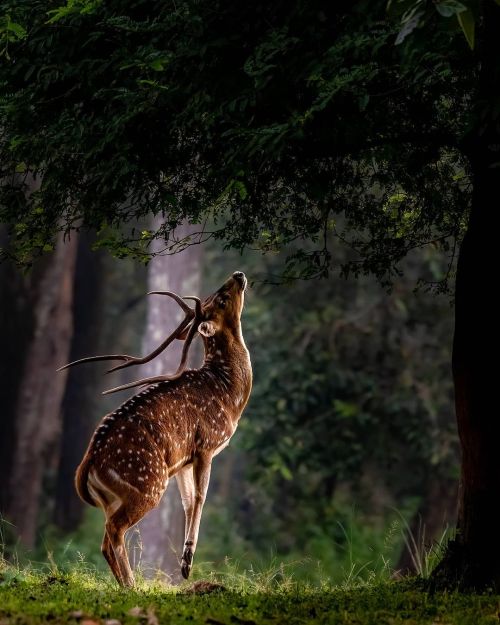
Spotted Deer
by Jeetendra Chaware
oh- cervidae!!? XDD





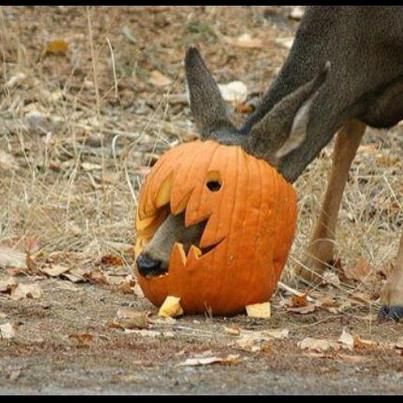





but oh... cervidae.. <3








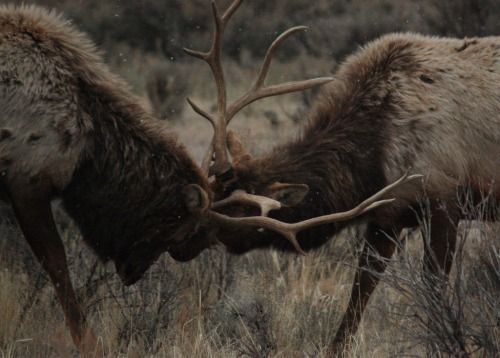


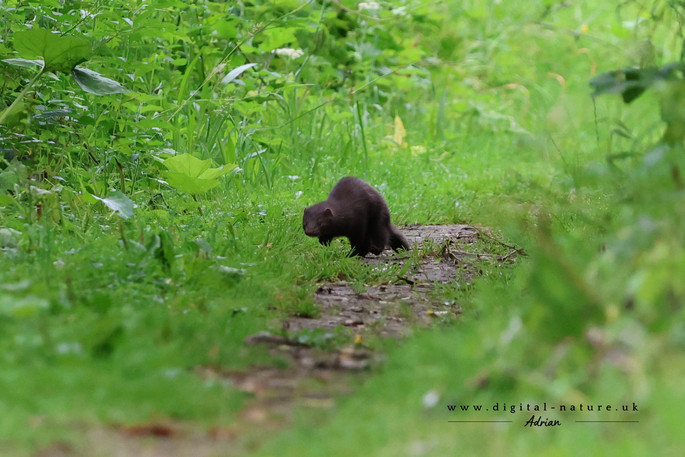










I just realized that apparently I never shared this series here on Tumblr??
I call it Living Paintings, as they are recreations of extinct animals that some artists actually saw and painted from memory, a long time ago.
Patreon • Ko-fi • Facebook • Twitter • Prints & Merch
oh- cervidae!!? XDD











but oh... cervidae.. <3















